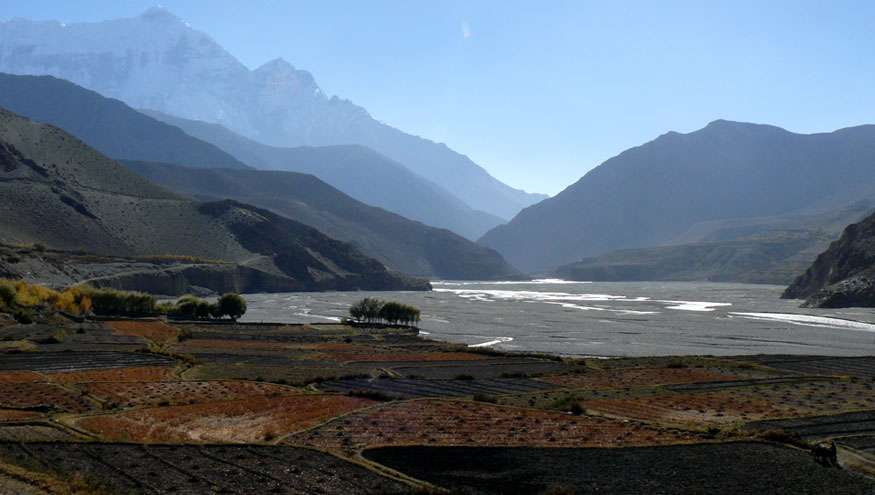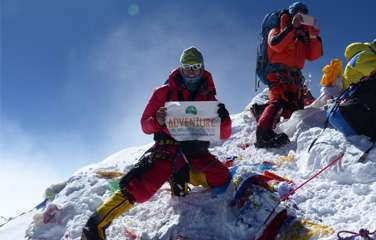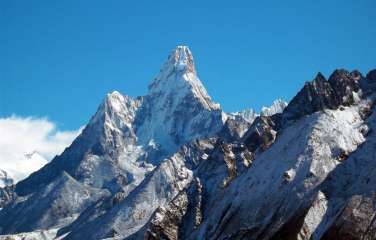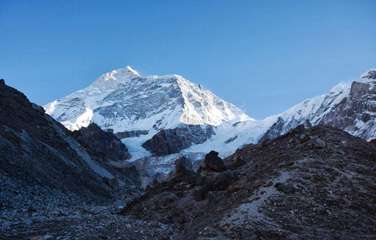About Annapurna Expedition
Annapurna Expedition leads to the top of the world's 10th highest mountain, Mt. Annapurna (8,091 m). Climbed first in 1950 by Maurice Herzog and Louis Lachenal, Mt. Annapurna is one of the most technical mountains to climb in the Himalayas. The peak's exact location can be found at the coordinates of 28°35’45''N83°49’20''E. The word, Annapurna has religious importance as per the Hindus and means the Goddess of the Harvests as well as an avatar of Lord Durga. Being a very difficult mountain to climb, you have to be physically strong with high endurance and knowledge of serious climbing techniques. We, Small Adventure World offer comprehensive and high-quality service during the climbing including hygienic meals, fuel, oxygen, tents, and other necessities throughout the climb. For more information regarding the trip, contact us anytime.
Annapurna Expedition route (southwest ridge)
Annapurna Advanced Base Camp (4,200m)
Climbing Mt. Anapurna from the southwest ridge is the common route. From Miristi Khola, the trail ascends to Annapurna Advanced Base Camp. We will establish the advance base camp before you reach there. Everything will be ready for you to welcome you. You will be spending a few days here to acclimatize yourself before heading towards the summit. The trail to the Advance Base Camp is not so tough.
Camp I (5,200m)
From Annapurna Advanced Base Camp, you will walk for around 4 hours to reach Camp I. There will be a few technical sections that you have to cover before reaching Camp I. Walking on mixed terrain of rock and glacier, you reach Camp I located at the middle of the glacier on the slope of 25º. We will choose the avalanche free zone to set the camps.
Camp II (5,700m)
Another 4 and half hours of ascending will lead you to Camp II. The route to Camp II is less technical, however you have to cross the Black Rock Wall and many steep parts. Before reaching Camp II, you also cross a 60 meters high rock wall.
Camp III (6,500m)
From Camp II to Camp III, there is a total of 800 meters distance. Your Sherpa guide will fix 80% of the route with rope for your safety. Crossing a glacier from east to west, you pass by a 55º wall. As the elevation will increase with every step, the exposure to wind, sun, and cold also increase.
Camp IV (7,100m)
Camp IV is the last camp you set before moving towards the summit. Passing many crevasses and seracs, you continue ascending towards the base of a spur. You will set Camp IV inside a rock cave. The oxygen level begins to get low from here onwards, therefore a little effort while doing anything can feel exhausting. After climbing for three hours on a steep slope of 50-55º, you reach Camp IV.
Annapurna Summit (8,091m)
The day begins mid-night around 11:00-12:00 pm. You begin pushing towards the summit. Before the main summit lies a false summit. From Camp IV, you fix 900 meters long rope. Passing by many basins with short snow headwalls, you reach the summit. After spending some time at the summit, you retrace the pass back to Camp II and then drop further down to advance camp.
Variation & Custom Itinerary
You can also join adventurous treks like Annapurna Circuit Trek with Tilicho Lake or Nar Phu Valley Trek in the Annapurna region. We do offer tailor-made Annapurna Expedition, where we will design the entire program as per your requirements.





